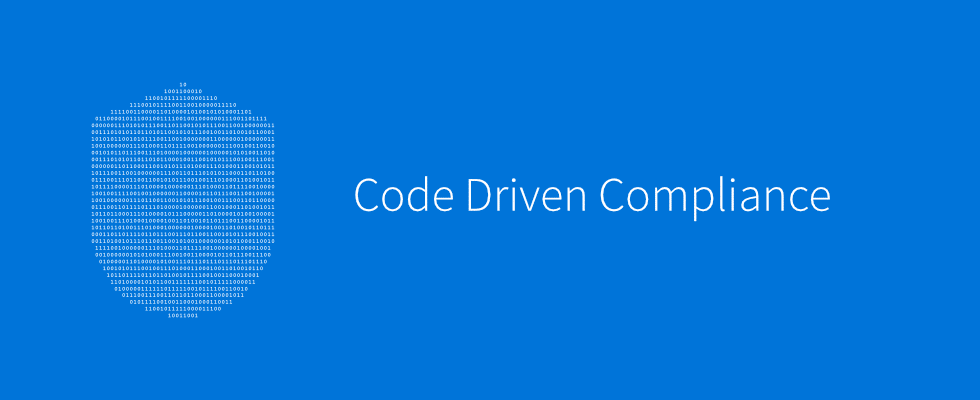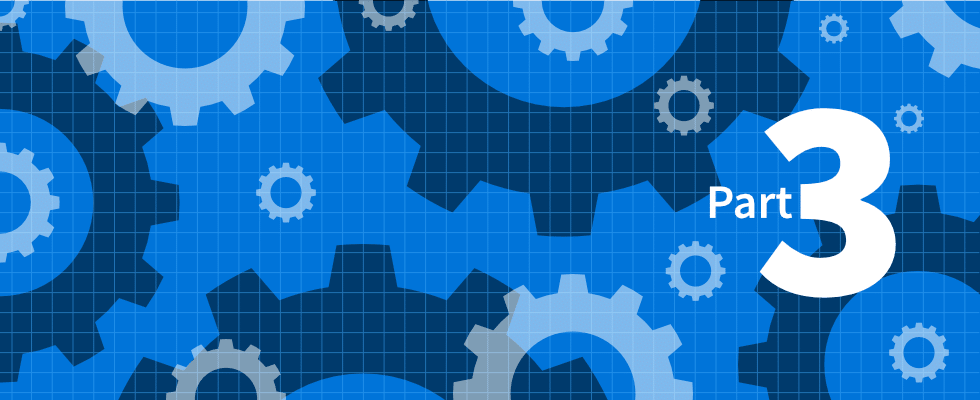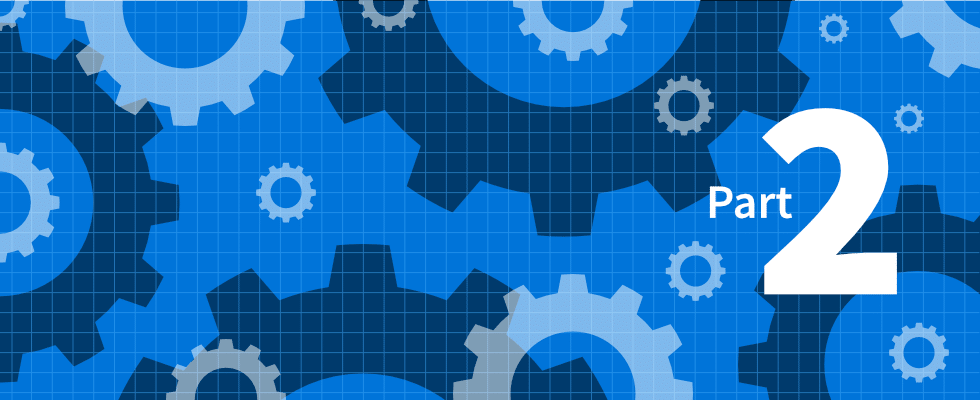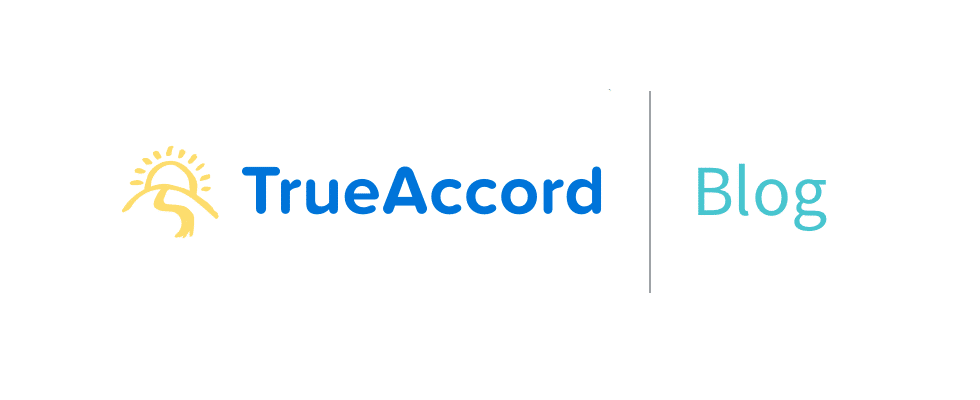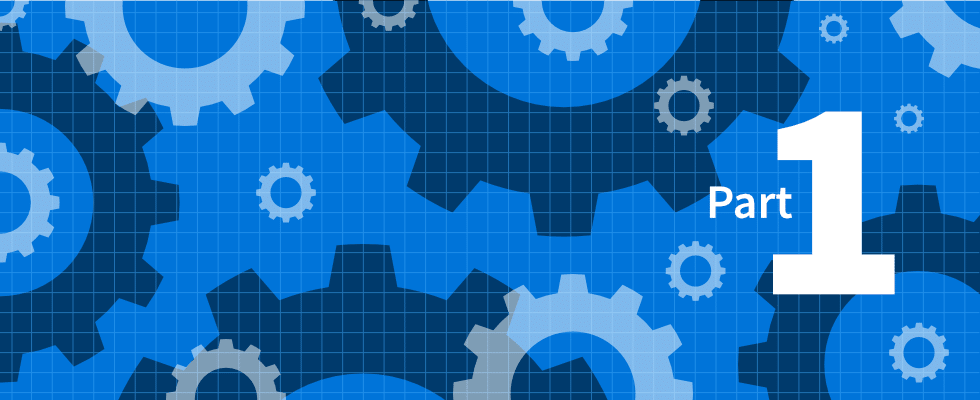New white paper: code driven compliance keeps you safe
Compliance is top of mind for the debt collection industry. Highly regulated at the State and Federal levels, collectors are subject to dozens of laws and regulations that govern every aspect of their operations. A highly litigious culture based on strict liability laws means a constant threat of lawsuits, resulting in shift s in courts’ interpretations of various statutes. To pile on, debt collectors are subject to active enforcement and rulemaking activity and attention by lawmakers, leading to ongoing updates in debt collection laws. What can debt collectors do to get ahead of them curve? At TrueAccord, we know code driven compliance is the answer. (more…)
Augmenting your strategy with automation: part three of three
Automation and digitization offer new tools for the collection strategist, augmenting the traditional building blocks. These new tools, introducing flexibility and sophistication that are usually attributed to other parts of the business, can mitigate common pitfalls. (more…)
Common pitfalls of collection strategies: part three of three
There are multiple reasons for preferring certain collection strategies over others. Every strategy has built in areas of weakness that cause it to make less money than possible. Strategies shouldn’t be stagnant, and as new tools present themselves, strategists can continue to fine tune their strategy and improve returns. (more…)
Augmenting your strategy with automation: part two of three
Automation and digitization offer new tools for your collection strategy, augmenting the traditional building blocks. These new tools, introducing flexibility and sophistication that are usually attributed to other parts of the business, can mitigate common pitfalls. In this series, adapted from our free eBook Automating Debt Collection 101, we’ll review the three major areas where automation and digitization can boost a collection strategy: Early contacts and improved segmentation Persistent communication Improved customer satisfaction In this second part, we’ll focus on improving performance with persistent communication. Customers in debt are in a dire situation, cannot pay the balance in full, and many times even a payment plan isn’t feasible. A call center is limited in its flexibility – beyond a certain number of payments or customizations, a human agent is just too expensive. These accounts risk being mishandled, and end up paying less than they could with some “hand holding”. Automated collections have a tremendous advantage in handling complex cases. The platform consistently follows up with customers using multiple channels, offering various solutions according to an optimized offer strategy, and administers changes in those solutions (split payments, rescheduling and more) over time as needs change. These tools can accept and administer a monthly $5 payment that increases over time, even if the customer misses a few payments and needs consistent follow-ups. When the vast majority of contacts are automated, even small amounts are profitable – and add up. The system doesn’t get tired, doesn’t get angry, and doesn’t need to go home by the end of the day. It’s there to service the customer. TrueAccord sees more than 35% of customers in an average placement click on a link and negotiate with an automated system, thanks to diligent and relevant follow ups. In tests, working on the long tail of underserved accounts yields 4-8% of additional recovery – dollars that would otherwise be considered lost.
Common pitfalls of collection strategies: part two of three
There are multiple reasons for adopting one strategy over the other. Every strategy has built in areas of weakness that cause it to make less money than possible, but all have common mistakes - some shared and some unique. Strategies shouldn’t be stagnant, and as new tools present themselves, strategists can continue to fine tune their strategy and improve returns. In the following three post series, adapted from our free eBook Building a Collection and Recovery Strategy, we’ll review the top three pitfalls we see with common collection strategies. They are: Under-charging when selling or over-paying when outsourcing Only focusing on a small percentage of customers in an outsourced strategy Losing customer relationships in a sell or litigation heavy strategy In this second part, we’ll touch on another one of the common mistakes we see: having a narrow focus when collecting. Traditional debt collection is difficult to scale, and heavily relies on humans making phone calls. Collection agents try to stay away from accounts that require a lot of interaction to recover. Because of the high cost of a call, agencies focus on calling accounts with the highest yield for them. Agents are also human, and humans – especially those making commission – want the home run, not the singles and doubles. Low balance accounts, accounts that cannot currently pay or ones that require a long time to convert will get less attention. That creates underserved segments and lower returns for the lender. We think the issue is the limited set of tools offered to collection strategists. The low margin problem is inherent to call centers, and most debt collectors are exactly that: specialized call centers. They have no ability to provide the type of flexibility required by a lender that doesn’t have homogenous portfolios with high average balances. A lot of money is left uncollected in the long tail. Want to use our tools to optimize your strategy? Visit our website to learn more.
Put your alerts in version control with DogPush
At TrueAccord, we take our service availability very seriously. To ensure our service is always up and running, we are tracking hundreds of system metrics (for example, how much heap is used by each web server), as well as many business metrics (how many payment plans have been charged in the past hour). We set up monitors for each of these metrics on Datadog, that when triggered, will page an on call engineer. The trigger is usually based on some threshold for that metric. As our team grew and more alerts were added we noticed three problems with Datadog: Any member of our team can edit or delete alerts in Datadog’s UI. The changes may be intentional or accidental, though our team prefers to review changes before they hit production. In Datadog, the review stage is missing. Due to the previous problem, sometimes an engineer would add a new alert with uncalibrated thresholds to datadog to get some initial monitoring for a newly written component. As Murphy’s law would have it, the new alert would fire at 3am waking up the on call engineer, and it may not even indicate a real production issue, but a miscalibrated threshold. A review system could better enforce best practices for new alerts. Datadog also does not expose a way to indicate that an alert should only be sent during business hours. For example, for some of our batch jobs, it is okay if they fail during the night, but we want an engineer to address it first thing in the morning. To solve these problems, we made DogPush. It lets you manage your alerts as YAML files that you can check in your source control. So you can use your existing code review system to review them, and once they’re approved they get automatically pushed to DataDog -- Voila! In addition, it’s straightforward to setup a cron job (or a Jenkins job) to automatically mute the relevant alerts outside business hours. DogPush is completely free and open source - check it out here.
Augmenting your debt collection strategy with automation: part one
Automation and digitization offer new tools for the collection strategist, augmenting the traditional building blocks for your debt collection strategy. These new tools, introducing flexibility and sophistication that are usually attributed to other parts of the business, can mitigate common pitfalls. In this series, adapted from our free eBook Automating Debt Collection 101, we’ll review the three major areas where automation and digitization can boost a collection strategy: Early contacts and improved segmentation Persistent communication Improved customer satisfaction In this first part, we’ll focus on using automation to facilitate early contacts and improved segmentation. Automated collections are scalable. This means communicating with all customers as early as possible in the collection cycle, quickly working to resolution with those who can pay, and a more robust debt collection strategy. In traditional call-center collections, up to 50% of meaningful interactions are made within the first 30 days of communication. With an automated strategy, most of that value can be captured in a much more cost-effective manner, in a much shorter time span. No more guessing who to call first because everyone can be contacted at scale. Further, automated and digital collections create a wealth of data that cannot be gleaned form calls. User clicks and browsing, time and day of activity and more. The data can be used to segment accounts to those who are engaged, those who’ll respond better to phones, and those who should be sold or handled in other ways. It allows much more flexible recall criteria than placing for a set number of months, no matter what happens with the account. This means giving accounts the treatment they need at the right time, improving liquidation as well as cost to collect thanks to the scale of operations. Want to use our tools to optimize your strategy? Visit our website to learn more.
Common pitfalls of collection strategies: part one of three
There are multiple reasons for adopting one collections strategy over the other. Every collections strategy has built in areas of weakness that cause it to make less money than possible. Strategies shouldn’t be stagnant, and as new tools present themselves, strategists can continue to fine tune their strategy and improve returns. In the following three post series, adapted from our free eBook Building a Collection and Recovery Strategy, we’ll review the top three pitfalls we see with common collection strategies. They are: Under-charging when selling or over-paying when outsourcing Only focusing on a small percentage of customers in an outsourced strategy Losing customer relationships in a sell or litigation heavy strategy In this first part, we’ll focus on mis-pricing your portfolio when debt sales are part of your collections strategy. When selling debt or outsourcing, the lender’s interface with vendors is almost deceivingly simple. Companies tend to mix high yielding accounts with low yielding ones – and end up recovering less from the former so they can get rid of the latter. That is often the result of a rudimentary segmentation and pricing strategy at the seller. Even when segmenting, collection strategists often settle on a simple champion/challenger model for each segment to get the best price or lowest contingency rate. This limited model is based on two issues: First, the assumption that collection services are commoditized and don’t offer any unique technique, so price is the only differentiator. If everyone is the same, why segment? Second, there isn’t a lot of data feedback in collections to allow proper behavior-based segmentation. Collection agencies aren’t set up to provide high quality data feedback, and debt buyers will often not want to share. The only mode of operation is to sell or place and forget about the debt for a while. Want to use our tools to optimize your strategy? Visit our website to learn more.
Sign of the Times: Synchrony Bank Expects More Charge-offs
News hit this week that Synchrony bank increased its charge-off guidance to 4.5-4.8%. This is expected, as multiple banks expect higher charge-off rates due to the change in credit cycle and deteriorating consumer trust. The "good years" of cheap credit fueled by low (and negative) interest rates seem to be over, and lenders are tightening their belts. We see that with the unfortunate crunch in interest in Marketplace-style consumer loans, but expect the effect across multiple types of loans. Synchrony, whose portfolio skews towards lower FICO-score customers, may just be the canary in the coal mine. Shares of other large issues tumbled accordingly this week, although not to the same magnitude as Synchrony's.
The three technology keys to automating debt collection
You may have already downloaded our free eBook, Automating Debt Collection 101. This is an excerpt. Flipping the traditional butts-on-seats model on its head and teaching a machine how to do a human’s job is not an easy process. We’re talking about domain-expert based automation. This is a grueling, operational process of understanding why some people pay and others won’t, and translating it into algorithms that grow with the data they accumulate. To realize the benefits of automation, you’ll need to pay attention to three elements: Data Infrastructure The key in this process is defining our key performance indicators. One can’t start this task if data are unavailable, corrupt or fragmented. Most collection teams use a tapestry of systems - for scrubbing bankruptcies, for calling, a mail processing system, a payment processing interface and so on. That leads to a fragmented data store, which makes it impossible to know which actions were taken on a debt and attribute success to any of them. You can’t improve what you can’t measure. Your first step is creating a unified data store for all your data. Feedback Loop Extracting knowledge from domain experts can be frustrating. Often they decide intuitively and cannot explain their reasoning. It takes training, ongoing conversation, and an iterative process to structure their knowledge. The feedback loop includes three steps: Interviewing your experts: presenting several cases that were successfully converted and those that weren’t, and asking what they have in common. Implementation: the resulting model is validated against data trends. Deployment: the model is deployed to your system, and agents can comment on its performance in real time and compare it to the way they would act under similar conditions. Creating a feedback loop between your agents and data scientists is incredibly important. Without it, your data scientists are guessing, and your agents work without guidance, their knowledge untapped. Increasing Relevance The human brain is an incredible machine, and it o ffers intuitive connections that computers can’t make. Whenever faced with new information, even the slightest addition, the brain recalculates its route and makes new assumption about the person they are interacting with. A machine can’t replicate the brain’s ability but it can mimic it – with some help. Use your experts’ understanding of a customer’s response to inform the way you send your initial communication, as well as using responses you get from them to inform your next communication. While deploying follow up flows based on browsing patterns, we realized some flows converted up to 7 times better than a regular message. Find pockets of customers who don’t get personalized treatments and create those responses. Bottom Line Consumers are increasingly reliant on credit to fund their consumption – whether short or long term. This leads to defaults, and to debt collection being a part of any business’ tool box. As you grow, using automation or an automated solution like TrueAccord is the right way to minimize your costs while increasing your performance, scalability and customer satisfaction. Interested to learn more? Pick up our free eBook: Automating Debt Collection 101
Get started right now.
Whatever your organization’s technical needs, we have the tools and experts to onboard you today.
Get Started